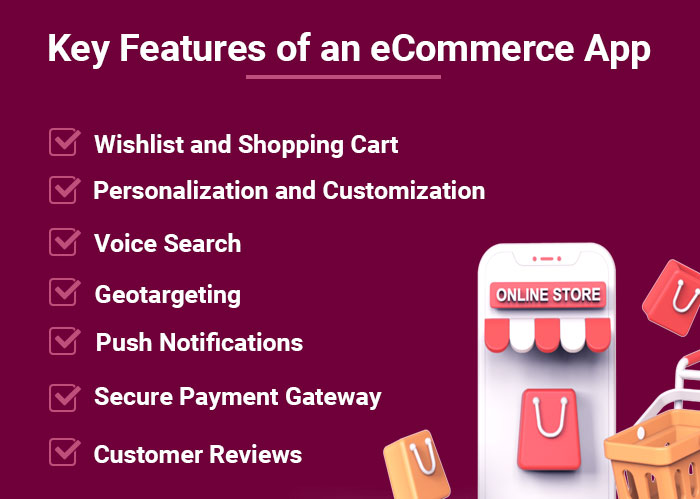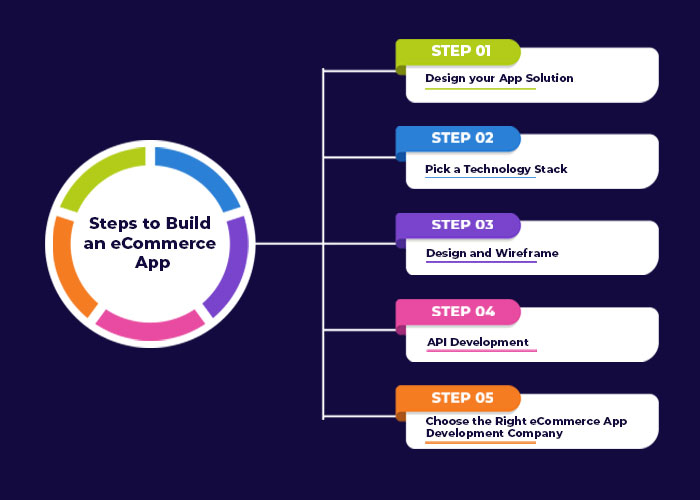October 27, 2022
By: PhoenixBizz Staff Writer
PhoenixBizz is a division of Sofvue, LLC
Printed with permission of Data Titan and Sofvue LLC
It’s no surprise that eCommerce growth is expanding, and fast, generating over $768 billion in the US in 2021, and with the continued growth of sales of smartphones, the share of people shopping online is only getting stronger. According to Statista, mobile retail commerce revenue is expected to generate $1.3 trillion in sales in the United States by 2025.
In this article, we will cover several key points you need to consider when contemplating the development of an e-commerce app.
Why Should You Build an eCommerce App?
People are spending more time on e-Commerce apps than ever. The average person now spends 3 hours and 15 minutes on their phones every day, and 20% spend upwards of 4.5 hours per day on their phones.
Key Features of an eCommerce App
While you need several features in your mobile commerce app, here are the must-haves.

#1 Wishlist and Shopping Cart
A shopping cart allows customers to add items to their shopping cart, view the contents of their cart, and checkout. However, it’s critical that the shopping cart icon is always visible, irrespective of the page a customer is on.
Additionally, a wish list allows users to save the products they love but don’t want to purchase at the moment. This ensures the next time they want to make a purchase; they can go directly to their wish list and buy their items immediately.
#2 Personalization and Customization
Personalization and customization are important for customer satisfaction. Customers want to feel like the app is made especially for them. They want and demand a very personalized experience.
Ways to accomplish this include:
✅ Building a personalized homepage
✅ Offering personalized product recommendations
✅ Providing customized search results based on a visitor’s previous purchases or browsing history
✅ Allowing customers to create and maintain personalized accounts
#3 Voice Search
Voice search is the future of eCommerce apps. It’s already a big part of Google’s search engine and will soon be integrated into other popular apps like Facebook Messenger, Siri, and Alexa. Many people now use “voice search” to shop online. In fact, voice commerce is expected to exceed $30 billion by 2024.
#4 Geotargeting
Geotargeting is important for ecommerce apps because it helps you reach customers in a specific area. Geotargeting can be used to target customers based on their location or the location of their device.
For example, if you have an ecommerce app where users can place orders from the app and then pick up the order at a nearby store, geotargeting would allow you to show your ad only to people within a pre-defined distance of that store, say driving distance of 5 miles or walking distance of 1 mile or less.
Or maybe you want to advertise your product at a sporting event but don’t want to pay for ads that are shown outside stadium grounds. Using geotargeting, you could show ads only when users are inside the stadium and stop displaying those ads when they leave the venue area.
#5 Push Notifications
Push notifications are an easy way to engage customers and promote sales. You can use push notifications to remind customers of important dates, deliver coupons, or even deliver news and updates about your brand.
For example, if you're hosting a sale, you can send out push notifications with offers or reminders on how much time they have left before the sale ends. Customers interested in what you're doing will be notified on their phones and will be more likely to visit your site immediately!
#6 Secure Payment Gateway
A payment gateway helps you process payments online, either by credit card or other electronic means. The gateways you use must be PCI compliant, ensuring that your customers' private information is protected from any potential hackers and cyber criminals.
#7 Customer Reviews
Customer reviews are an important part of any eCommerce business. They help you build credibility and trust with customers. Customer reviews also help you identify areas for improvement in your business, allowing you to make changes that will improve customer satisfaction and retention rates.
Steps to Build an eCommerce App
Now that you know the importance of an eCommerce app and its key features, let’s look at the steps to build one. We’ll also discuss how you can choose an eCommerce app development company for your requirements.

Step#1 Design your App Solution
First, you must undertake the process of designing your mobile solution. This includes the discovery rounds, UX/UI interface design considerations, feature sets, the app providers (Apple and Google, and maybe Windows). You must also consider the following:
✅ What company will serve as your financial transaction gateway?
✅ Where will you host your site?
✅ What language will your platform be built on? There are dozens of possible choices.
✅ What is your DRP strategy and how will it be managed?
Step#2 Pick a Technology Stack
Choosing a technology stack is a critical step when building your eCommerce application. The technology stack is a combination of programming languages, software libraries, and tools you use to develop the solution.
You should choose it based on the needs of your project and any constraints involved in its development process. For example, suppose you want to support multiple platforms and devices. In this scenario, choosing a single language like Java might not be sufficient as it can only run on one platform at any given time (iOS/Android).
Also, if you are dealing with big data, using a standard database engine may not be sufficient for handling large amounts of data without compromising performance or scalability.
Step#3 Design and Wireframe
Design is one of the most important things you must get right when building an app. The look and feel of your app will determine the user experience, so you need to “design, then build”, not “build, then hope”. Further, wireframing allows you to quickly put your ideas onto paper so you can get feedback from real users on whether they make sense before investing too much time into them.
Step#4 API Development
API development is a crucial part of the eCommerce app development process. API(s) allows an app to communicate with the back-end server. Basically, APIs are responsible for data synchronization between your eCommerce app and the back-end server. This means that an API can be used to capture user information from your database or update certain elements in the database based on user actions in your mobile app.
Step#5 Choose the Right eCommerce App Development Company
You will need to select the right eCommerce app company for your project. That said, you will first need to decide what development model you are going to use. There are seven different models well beyond the scope of one article. We can help you decide the best path, even when we are not the right company. Here’s a few key thoughts you should consider in helping you make the right choice.
➤ Verify their Experience Building eCommerce Apps: First and foremost, check if the company has experience building eCommerce apps before you even talk to them! You need to locate a company that has built at least 50 applications. Anything less and you’ll be venturing into dangerous waters.
➤ View their Portfolio: Ask to see their portfolio, and although their work may have been developed for “enterprise” level mobile applications, you should still be able to see LOR’s or be provided with a list of contact phone numbers of former and current customers.
➤ Validate References: When choosing an eCommerce app development company, you should also validate references closely! Make sure they're legitimate and not just people the company has paid to give them a good review.
Cost of eCommerce App Development
The cost of eCommerce app development depends on a list of factors far too extensive to address in one article, or a hundred. It can vary from $50,000 to over a million dollars, depending on the application type, its complexity and functionality, the technologies used, and the platform it is being built for.
The main factors that determine the cost of eCommerce app development are:
◾ Functionality: The more complex your ecommerce application is, the more it will cost.
◾ Features: The features that an ecommerce application has will also determine its overall cost. If you need an application with advanced features such as multi-currency support and an inventory management system, it will be more expensive than one without.
◾ Technology Stack: Many companies use different technologies to build their ecommerce applications. Some choose Python or C#, Ruby on Rails, while others prefer JAVA, PHP. The technology stack used in making the app can and will impact its overall pricing.
How Can PhoenixBizz Help You?
PhoenixBizz is a full-service mobile app development company specializing in eCommerce app development. We have been designing and developing mobile and web-based application systems since 2004. We’ve began developing mobile app solutions in 2011, just two short years after the launch of the Apple Store, then in 2012 for the Google Play Store, and to date, we have designed and developed over $22MM in solutions for companies coast-to-coast, and across numerous business segments.
Our developers have extensive experience building apps using different programming languages, including Java, C#, PHP, Objective-C, and Swift, among others. We also use technologies like AngularJS and NodeJS to ensure the app is dynamic and functional enough to suit your business’s changing needs while being cost-effective.
Give us a call to learn more about our recently completed projects, read recent letters of recommendation, and to discuss how we can serve both your project goals and your company.
Read this blog: What Is The Real Cost To Build A Mobile App









